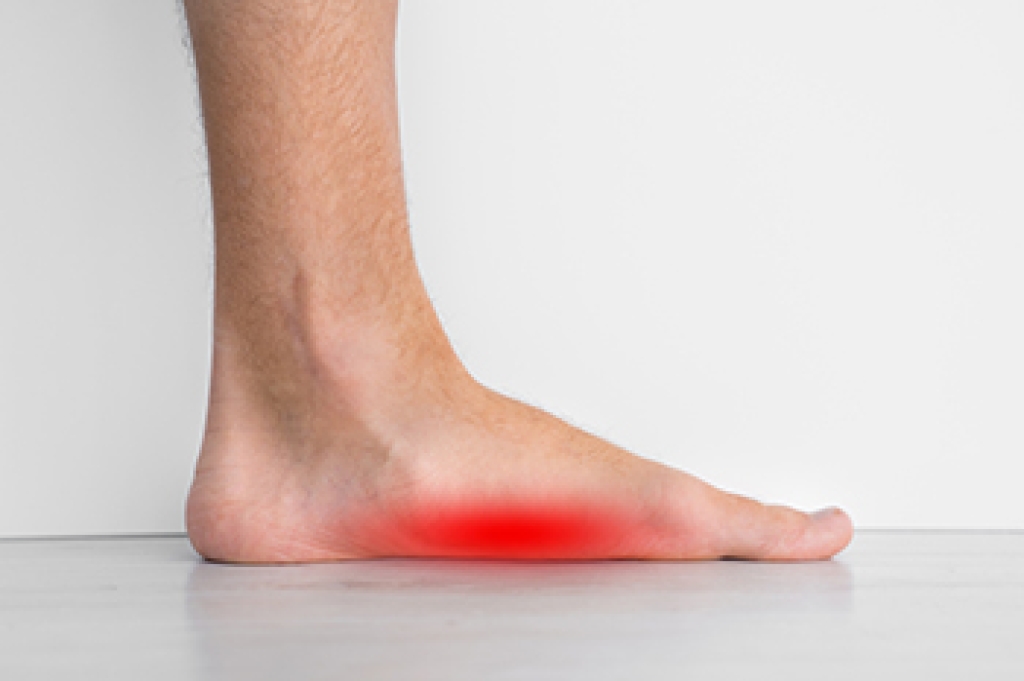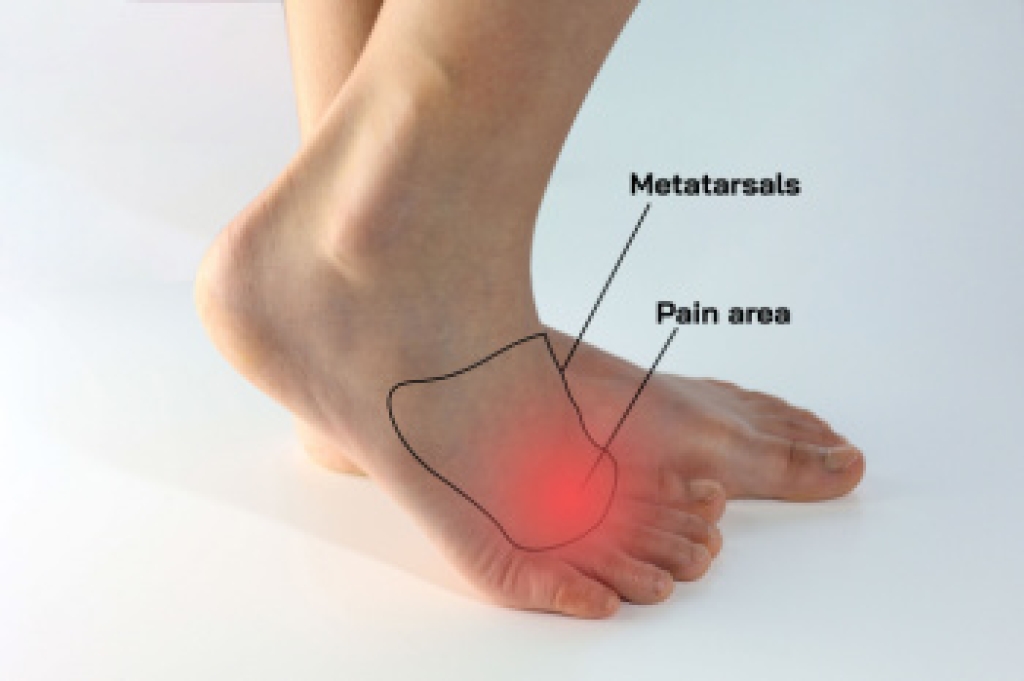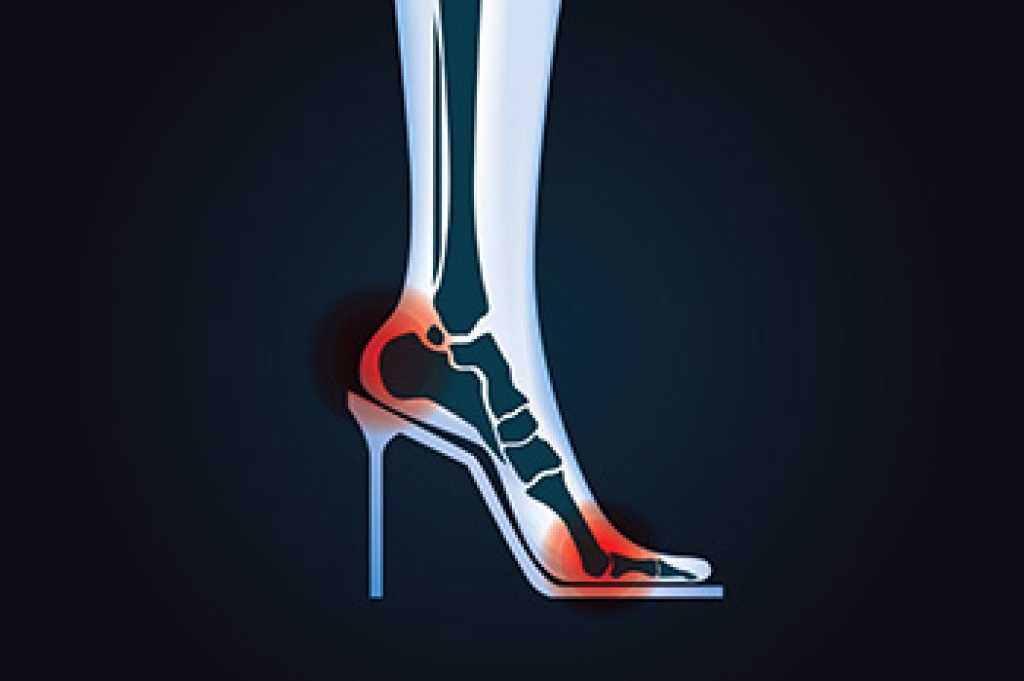Connect With Us
Blog
Blog
Facts About Having Flat Feet

Flat feet occur when the arch does not lift properly, causing the entire sole to touch the ground and placing extra pressure on the feet and ankles. This can begin in childhood or develop later from tendon problems like a tight Achilles tendon or weakness along the inside of the ankle. People with flat feet may feel aching in the arches, stiffness, or fatigue after long periods of walking or standing. Some notice the ankles leaning inward or calluses forming from added friction. A podiatrist can evaluate the arch, check tendon strength, and determine how the flat feet affect foot movement. Treatment options include orthotics to support the arch, improve alignment, and reduce strain, along with guidance on shoe choices. The podiatrist can also discuss surgery if the bones or tendons need correction. If you have foot problems related to flat feet, it is suggested that you make an appointment with a podiatrist for a diagnosis and treatment.
Flatfoot is a condition many people suffer from. If you have flat feet, contact Afsha Naimat-Shahzad, DPM from Leander Foot & Ankle. Our doctor will treat your foot and ankle needs.
What Are Flat Feet?
Flatfoot is a condition in which the arch of the foot is depressed and the sole of the foot is almost completely in contact with the ground. About 20-30% of the population generally has flat feet because their arches never formed during growth.
Conditions & Problems:
Having flat feet makes it difficult to run or walk because of the stress placed on the ankles.
Alignment – The general alignment of your legs can be disrupted, because the ankles move inward which can cause major discomfort.
Knees – If you have complications with your knees, flat feet can be a contributor to arthritis in that area.
Symptoms
- Pain around the heel or arch area
- Trouble standing on the tip toe
- Swelling around the inside of the ankle
- Flat look to one or both feet
- Having your shoes feel uneven when worn
Treatment
If you are experiencing pain and stress on the foot you may weaken the posterior tibial tendon, which runs around the inside of the ankle.
If you have any questions, please feel free to contact our office located in Leander, TX . We offer the newest diagnostic and treatment technologies for all your foot care needs.
Foot Pain From Morton’s Neuroma

Morton’s neuroma is a painful condition affecting the nerves between the toes, most commonly between the third and fourth toes. Foot pain often feels sharp, burning, or tingling and may radiate into the toes. Causes include repetitive pressure or irritation from tight shoes, high heels, or abnormal foot mechanics. Symptoms can include numbness, a feeling of a pebble in the shoe, swelling, and discomfort that worsens with activity. Risk factors include wearing narrow or pointed shoes, participating in high-impact sports, and having foot deformities such as bunions or flat feet. A podiatrist can help by diagnosing the condition, recommending footwear modifications, providing orthotics, performing conservative treatments, and, if needed, guiding advanced care. If you have developed toe or forefoot pain it is suggested that you consult a podiatrist who can accurately diagnose and treat what may be going on.
Morton’s neuroma is a very uncomfortable condition to live with. If you think you have Morton’s neuroma, contact Afsha Naimat-Shahzad, DPM of Leander Foot & Ankle. Our doctor will attend to all of your foot care needs and answer any of your related questions.
Morton’s Neuroma
Morton's neuroma is a painful foot condition that commonly affects the areas between the second and third or third and fourth toe, although other areas of the foot are also susceptible. Morton’s neuroma is caused by an inflamed nerve in the foot that is being squeezed and aggravated by surrounding bones.
What Increases the Chances of Having Morton’s Neuroma?
- Ill-fitting high heels or shoes that add pressure to the toe or foot
- Jogging, running or any sport that involves constant impact to the foot
- Flat feet, bunions, and any other foot deformities
Morton’s neuroma is a very treatable condition. Orthotics and shoe inserts can often be used to alleviate the pain on the forefront of the feet. In more severe cases, corticosteroids can also be prescribed. In order to figure out the best treatment for your neuroma, it’s recommended to seek the care of a podiatrist who can diagnose your condition and provide different treatment options.
If you have any questions, please feel free to contact our office located in Leander, TX . We offer the newest diagnostic and treatment technologies for all your foot care needs.
How High Heels Affect the Feet

High heels may look sexy and make the legs look longer, but a lifetime spent wearing high heels can cause a lot of damage to the feet. The angle at which the toes and ball of the foot are jammed into a pointy toe box adds undue pressure on the bottom of the foot. The higher the heel, the more pressure is added. This may result in several painful foot conditions including bunions, hammertoes, corns, calluses, and Achilles tendonitis, to name a few. Other effects in the long-term wearing of high heels is plantar fasciitis, Haglund’s deformity at the back of the heel, which is also called pump bump, knee and back pain caused by the shifting of weight, and Morton’s neuroma, which affects the nerves under the third and fourth toe. If you are experiencing any of these foot conditions and the pain is ongoing or worsening, please schedule an appointment with a podiatrist for an exam and discussion of treatment options.
High heels have a history of causing foot and ankle problems. If you have any concerns about your feet or ankles, contact Afsha Naimat-Shahzad, DPM from Leander Foot & Ankle. Our doctor can provide the care you need to keep you pain-free and on your feet.
Effects of High Heels on the Feet
High heels are popular shoes among women because of their many styles and societal appeal. Despite this, high heels can still cause many health problems if worn too frequently.
Which Parts of My Body Will Be Affected by High Heels?
- Ankle Joints
- Achilles Tendon – May shorten and stiffen with prolonged wear
- Balls of the Feet
- Knees – Heels cause the knees to bend constantly, creating stress on them
- Back – They decrease the spine’s ability to absorb shock, which may lead to back pain. The vertebrae of the lower back may compress.
What Kinds of Foot Problems Can Develop from Wearing High Heels?
- Corns
- Calluses
- Hammertoe
- Bunions
- Morton’s Neuroma
- Plantar Fasciitis
How Can I Still Wear High Heels and Maintain Foot Health?
If you want to wear high heeled shoes, make sure that you are not wearing them every day, as this will help prevent long term physical problems. Try wearing thicker heels as opposed to stilettos to distribute weight more evenly across the feet. Always make sure you are wearing the proper shoes for the right occasion, such as sneakers for exercising. If you walk to work, try carrying your heels with you and changing into them once you arrive at work. Adding inserts to your heels can help cushion your feet and absorb shock. Full foot inserts or metatarsal pads are available.
If you have any questions, please feel free to contact our office located in Leander, TX . We offer the newest diagnostic and treatment technologies for all your foot care needs.
How Type One Diabetes Can Affect the Feet

Type one diabetes is an autoimmune condition in which the body no longer produces insulin, requiring lifelong management to keep blood sugar within a healthy range. These ongoing shifts can influence foot health in subtle, but important ways. Circulation may become less efficient over time, leading to dry skin, slower healing, and a higher chance of infection. Nerve changes can cause tingling, burning, or numbness, making it harder to feel small injuries or areas of pressure. Even minor cuts, blisters, or cracks can worsen if they go unnoticed. Daily foot checks, wearing supportive footwear, and prompt care for any new concern can help protect long-term comfort and mobility. If you notice numbness, dryness, or wounds that heal slowly, it is suggested that you are under the care of a podiatrist who can help you to manage this serious condition.
Diabetic foot care is important in preventing foot ailments such as ulcers. If you are suffering from diabetes or have any other concerns about your feet, contact Afsha Naimat-Shahzad, DPM from Leander Foot & Ankle. Our doctor can provide the care you need to keep you pain-free and on your feet.
Diabetic Foot Care
Diabetes affects millions of people every year. The condition can damage blood vessels in many parts of the body, especially the feet. Because of this, taking care of your feet is essential if you have diabetes, and having a podiatrist help monitor your foot health is highly recommended.
The Importance of Caring for Your Feet
- Routinely inspect your feet for bruises or sores.
- Wear socks that fit your feet comfortably.
- Wear comfortable shoes that provide adequate support.
Patients with diabetes should have their doctor monitor their blood levels, as blood sugar levels play such a huge role in diabetic care. Monitoring these levels on a regular basis is highly advised.
It is always best to inform your healthcare professional of any concerns you may have regarding your feet, especially for diabetic patients. Early treatment and routine foot examinations are keys to maintaining proper health, especially because severe complications can arise if proper treatment is not applied.
If you have any questions, please feel free to contact our office located in Leander, TX . We offer the newest diagnostic and treatment technologies for all your foot care needs.
Blog Archives
- 2026
- 2025
- 2024
- 2023
- 2022


